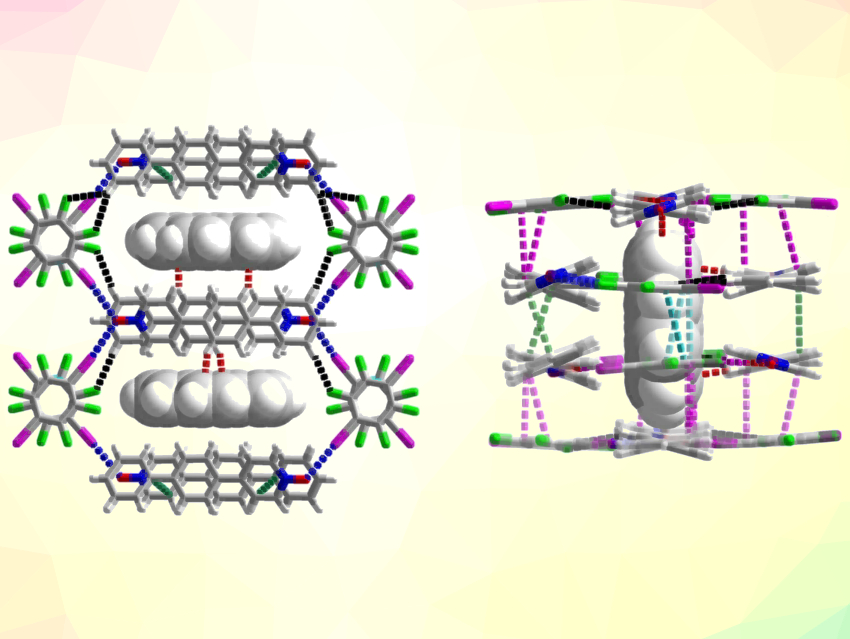Supramolecular host–guest chemistry is an interesting research topic. Host structures based on halogen bonds have received a lot of attention for potential applications in, e.g., materials science, molecular recognition, gas storage, encapsulation or delivery of drugs, or the separation of analytes. Many of these host structures, however, have small and rigid cavities.
A soft-cavity host, in contrast, can be defined as a supramolecular self-assembled entity with adjustable size and shape that can conform to the structure of the guest while maintaining the stability of the host’s basic framework. A larger soft cavity can, e.g., be used to isolate light-emitting guest molecules and avoid quenching their luminescence.
Hui Wang, Shanxi Normal University, Linfen, China, Feng Feng, Shanxi Datong University, China, Wei Jun Jin, Shanxi Datong University and Beijing Normal University, China, and colleagues have developed a large soft-cavity host composed of 1,4‐diiodotetrafluorobenzene (DITFB) and 4-biphenylpyridine N-oxide (BPNO). The host is assembled via the inclusion of a planar aromatic guest molecule— either pyrene (Pyr) or perylene (Per)—through C–I⋯−O–N+ halogen bonds and π-hole⋯π bonds.
The guest molecules can be completely encapsulated in the host cavity to assemble ternary host-guest cocrystals, namely, Pyr@DITFB ⋅ BPNO (pictured) and Per@DITFB ⋅ BPNO. The luminescence of these ternary cocrystals originates from their discrete guest molecules, which exhibit pure-blue and yellow emissions, respectively. These cocrystals have potential for use in optical applications, such as organic light-emitting diodes (OLEDs).
- Ternary Cocrystals with Large Soft Cavities: A 1,4‐diiodotetrafluorobenzene (DITFB)⋅4‐Biphenylpyridine N‐oxide (BPNO) Host Assembled by Inclusion of Planar Aromatic Guests,
Wen Juan Liang, Hui Wang, Xue Chen, Ting Ting Zhang, Yun Feng Bai, Feng Feng, Wei Jun Jin,
ChemPlusChem 2021.
https://doi.org/10.1002/cplu.202000779



![Synthesis of [c2]Daisy Chains via Mechanochemistry](https://www.chemistryviews.org/wp-content/uploads/2025/04/202504_RotaxanesWithSolidStateMechanochemistry-125x94.png)
